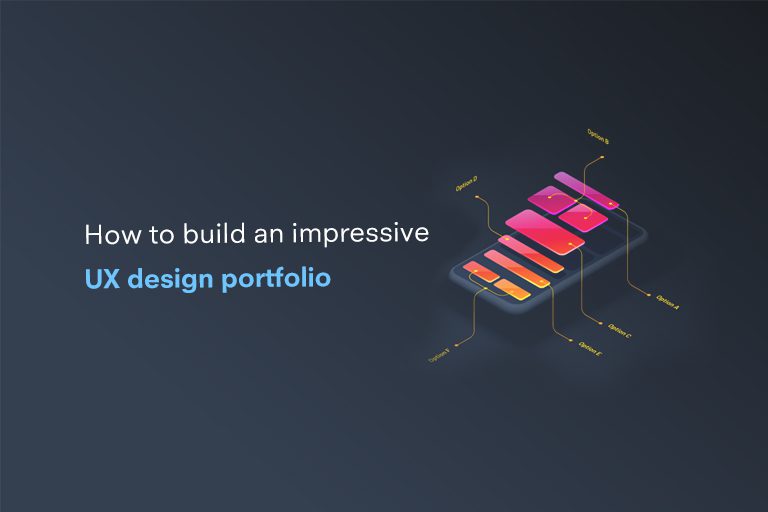How you climb a mountain is more important than reaching the top. – Yvon Chouinard
Setting the tone on how crucial methodology and approach is, a well-designed digital portfolio for a UX designer needs to demonstrate their methodology, their problem-solving techniques and their proficiency to achieve the desired results. We are all virtually connected and what a hiring manager is seeking in a UX designer is not simply ‘I can do this’ but rather ‘this is how I used design to solve a problem’. This calls for and builds the need for UX designers to tailor their portfolios for their audience, that is, the people to whom they are sharing it with. If your aim is to work for a global firm, the portfolio needs to highlight different sets of aspects in your design process and personality whereas if your aim is to work as a freelancer, you will need to edit your portfolio each time to send a pitch to someone new to stay more relevant.
Read more: Impact of 3D printing on the future of Product design
With UX design being a wide-ranging field, it is important for UX designers to define the titles clearly, that is, interaction designers, UX researcher, experience strategist among others. Each designation is an essential component in the final product delivery, that helps to improve the experience for the users but each one is unique and not the same. To craft your own unique portfolio, here is a short guide:
Skill specialization clarity
In building your UX portfolio, as a designer, you must have clarity and confidence in what skills you possess, what processes you use and what kind of projects you specialize in. There should be a clear communication on your skill, ability and scale of work to the viewer while not giving away too much information. When you put in all of your past projects, the portfolio then becomes a repository of information rather than a crisp offering of your abilities. Pick your most recent, specific to skill set and outstanding projects to highlight your abilities.
Striking a balance here becomes essential, a balance between clear and concise information – which requires planning. This planning involves you asking yourself a few important questions:
-
What type/kind of UX design are you?
Is there a common area in UX design that all your projects have – that you have worked on? Is there a particular approach I value more?
Goal here is to get you to your central UX design journey.
Make sure the answers to many of such questions are kept in one word adjectives or short phrases that are easy to read, with a good recall value. -
What do I do in UX design?
Are you a UX designer or researcher? Or a UX generalist? Do I also have skills that reach UI design? Can you manage a team of UX professionals?
Your answers here will reveal to you what project you must include in your portfolio and how to manage the planning of your involvement in them.
For example, if you are an interaction designer – your project will include more work you have done related to the field than in ethnography research. -
What skills ( UX related) do I have?
What did you contribute to a particular project? What tools and techniques did you use in your UX design process? Did you help form/ implement/ design a strategy to solve a crucial problem? Were you involved in client meetings and talks?
Here you are likely to find words like ‘operated design software’ (example – XYZ Software) or ‘conducted research’. Pick words that help you sell yourself as an expert in the area.
Skill usage: How and for Whom?
For young designers or inexperienced designers it may be taxing to figure the kind of job they want to build a career in, here a few projects as interns, apprentice or with industry during university days can help them envision a desirable career path. Each project you add in your portfolio defines the kind of people you work with, the sector/ industry you work in and the domains you have focused on, be sure to make a clear written description in your portfolio for each project. To unlock the answer to this segment, you can ask yourself the question on:
What are 2-3 industries you’d like to work with, or have worked with and want to continue?
What kind of working place do you enjoy – would you work full-time, part-time, or a freelancer.
Are you looking to be associated with a social cause or a NGO/ NPO based organization?
Visual Appeal
A clean, defined and sequential manner of all the information on your portfolio will present a strong visual appeal to the viewer. Your sketches, wireframes, user journey maps, prototypes and more – should all be in a sequence to help any user make sense of it while it also stays visually appealing. A strong animated feature as an example might distract them from why they came to your digital portfolio in the first place, make sure to avoid adding such distractions.
Also Read: A brand identity designer’s guide to responsive logo design
Easy-to-understand words ( No jargon)
People will be more impressed by your work skills than the specialized knowledge of your technical jargon. You can attract new clients or hiring managers here with easy approachable words that are professional and avoid any excessive self-promotion. Work with evergreen language that still remains apt no matter how fast technology changes. This helps to reflect your understanding of your own skills in plain language – easy to grasp for non-experts, especially hiring managers.
Self-edit and discard
Make it a habit of self-editing your work, curating your work and to discard anything that is not relevant or an outstanding display of your abilities. Not everyone will comb through all details of every single project. Also do note that your work from 2-3 years ago may not anymore be your style or fully reflect your skills in the present day. Show you best with most recent projects, edit content that is no more relevant to your present ambitions and profile and keep the information crisp.
Read More: Evolution of creative sketching
Stakeholder Testimonials
If you are a freelancer, you must work on developing a close working relationship with your clients and stakeholders who can leave you with stellar testimonials on how working with you has been a great journey for them. A few lines from your past clients, stakeholders, professors and mentors can go a long way in giving your profile credibility and opening gates to new opportunities. Here, you must make sure that testimonials are relevant to your kind of UX client you want to attract.
Live examples
Do not sell yourself short. Make sure you add live links to your finished projects so that hiring managers or potential clients can have a quick look into your abilities in action. Make sure each link is not simply lying there alone – be sure to add some context to the link. Add details of the projects, explain how you helped in solving the problem.
Also Read: Innovative Product Design Ideas That Impacted The World
Call to action
Make sure that you add a powerful call to action with your contact information. Especially if you are aiming to be a freelancer – you need people to know how to reach you promptly for work. Add lines like – Enjoy what you see, let’s connect. Adding further on how people can reach you during weekday/ weekends with specific time slots and other options. Add a ‘call me’ button or an ‘email me’ button for quick access to the viewers.
Walk the talk in your digital portfolio
Your portfolio is how someone will know how good are you in your design process, how smooth is your website design ( for your own portfolio), how you have managed to catch the eye of the viewer, have you engaged them in the content you have built?
Your portfolio is your opportunity to create an experiential space and a rather pleasant user experience. It must enhance your already stated skills and abilities, reflect on your focus area, offer a strong sense of aesthetic visual appeal to information architecture and each design element – all of it collectively should scream how you are a great UX designer.
Read more: What UX/UI and emerging technologies can do for retail?
In short, treat your portfolio like your professional project and make sure to incorporate your USP’s with a practical, easy to use design approach that shines.
Remember to keep a planned process in mind for adding each of your projects, highlighting collaborative work, showcasing your skills aptly without too much jargon. Your portfolio must reflect your mastery of the domain of UX design with effective visual demonstration of your work. And do not forget to tailor your UX portfolio to the audience to want to impress. Get started on your planning process then!



Want to Become a Designer ?
Strate is a unique design school that nurtures your talents as a designer by offering state-of-the art designing courses in Bangalore.
Join Strate